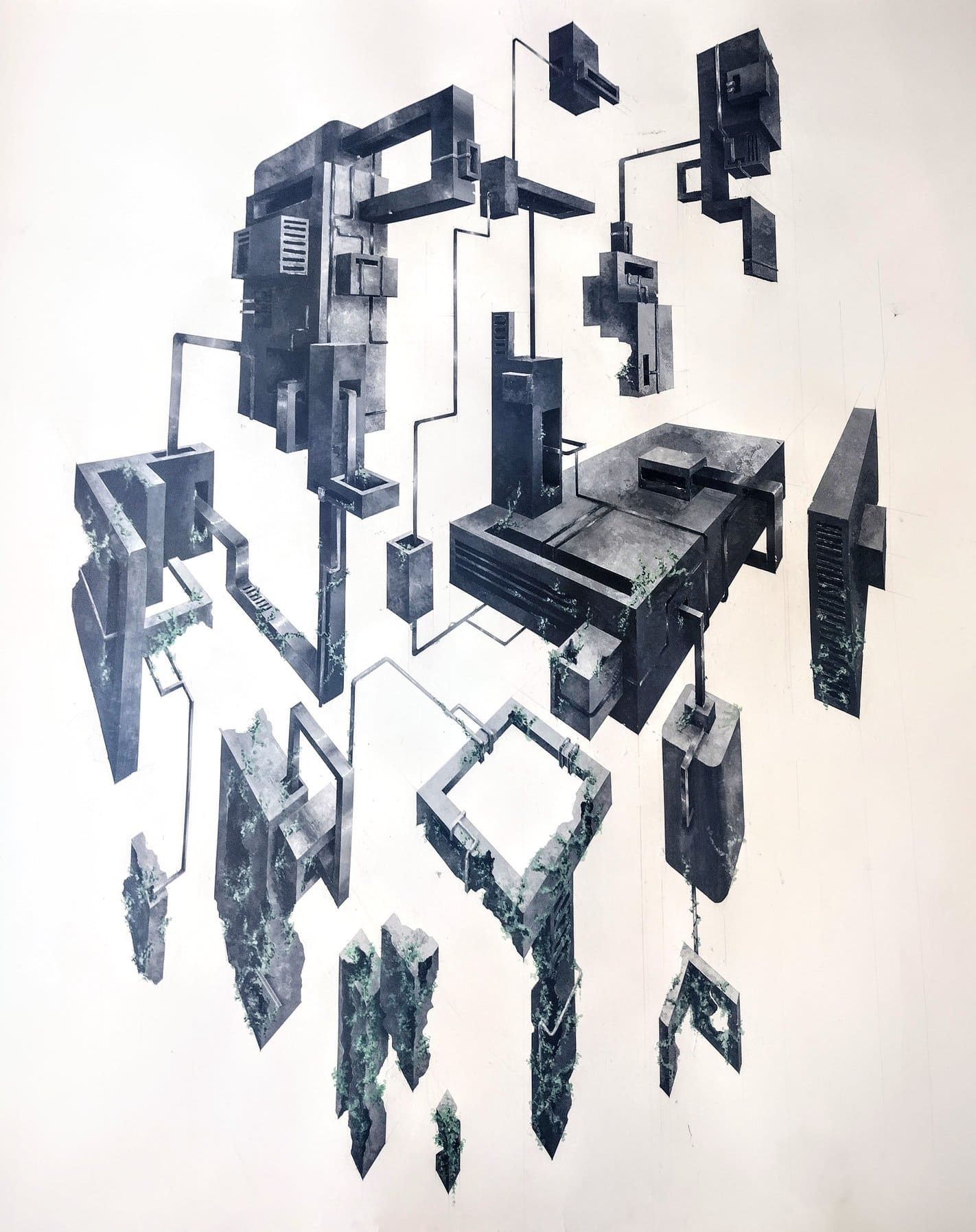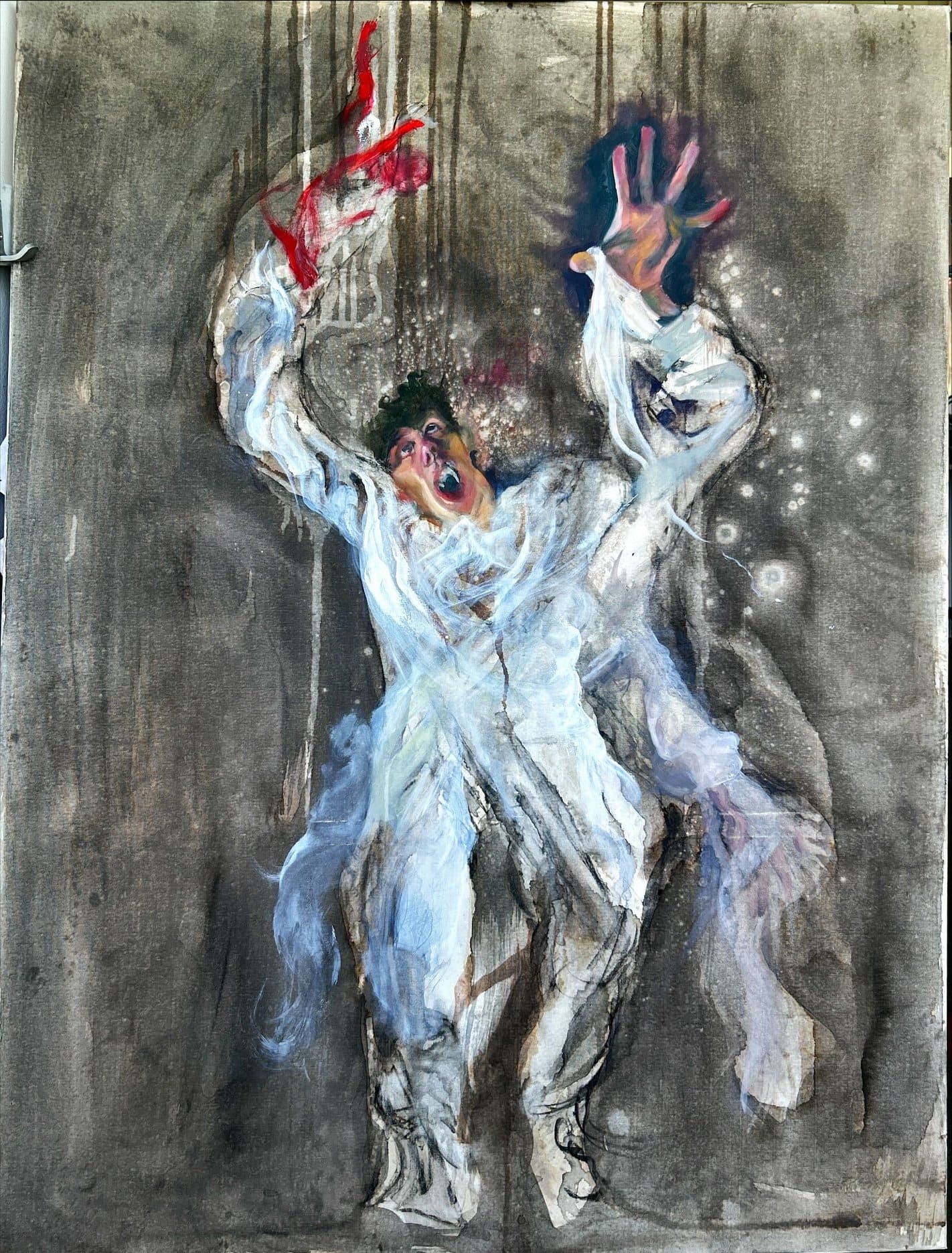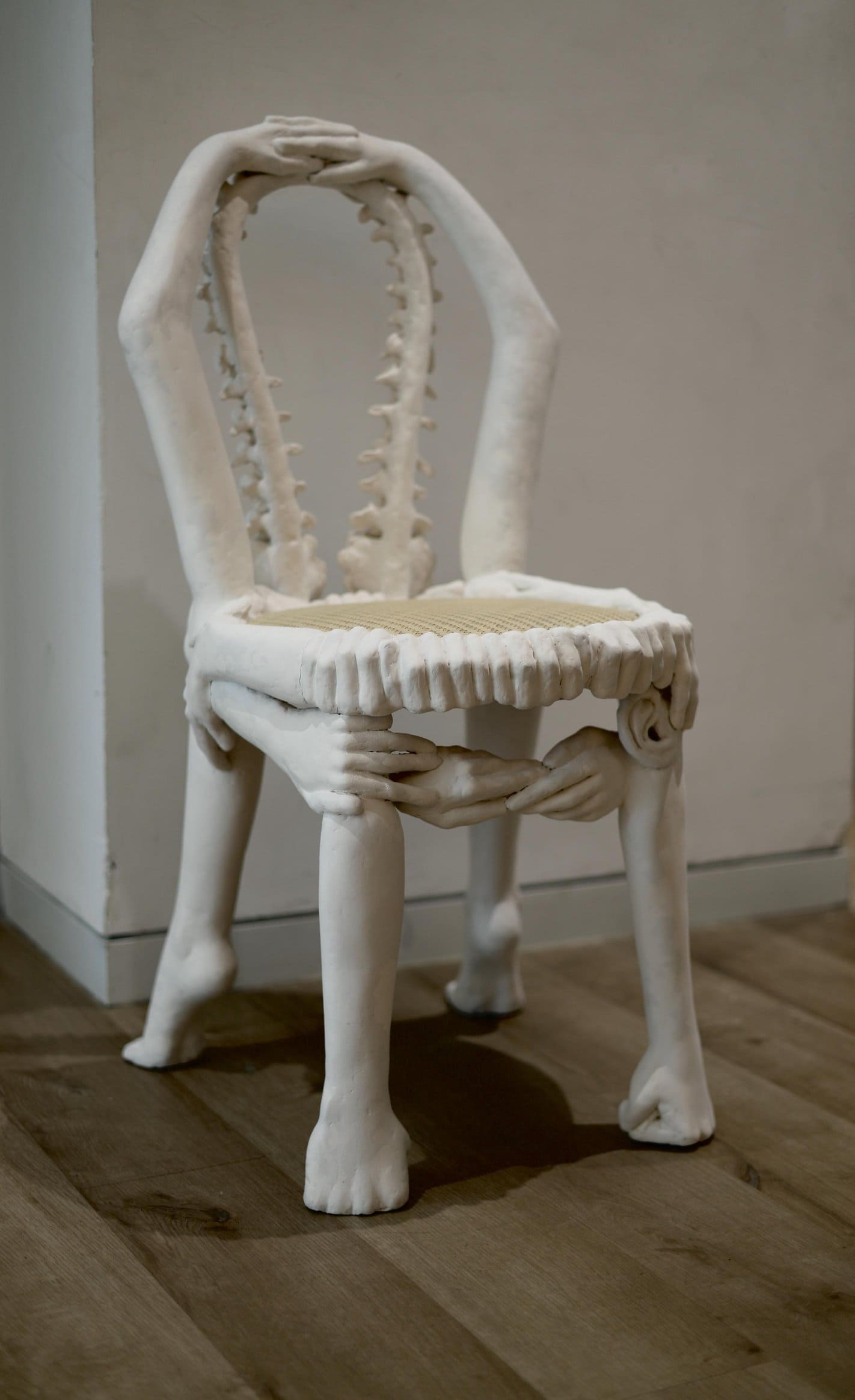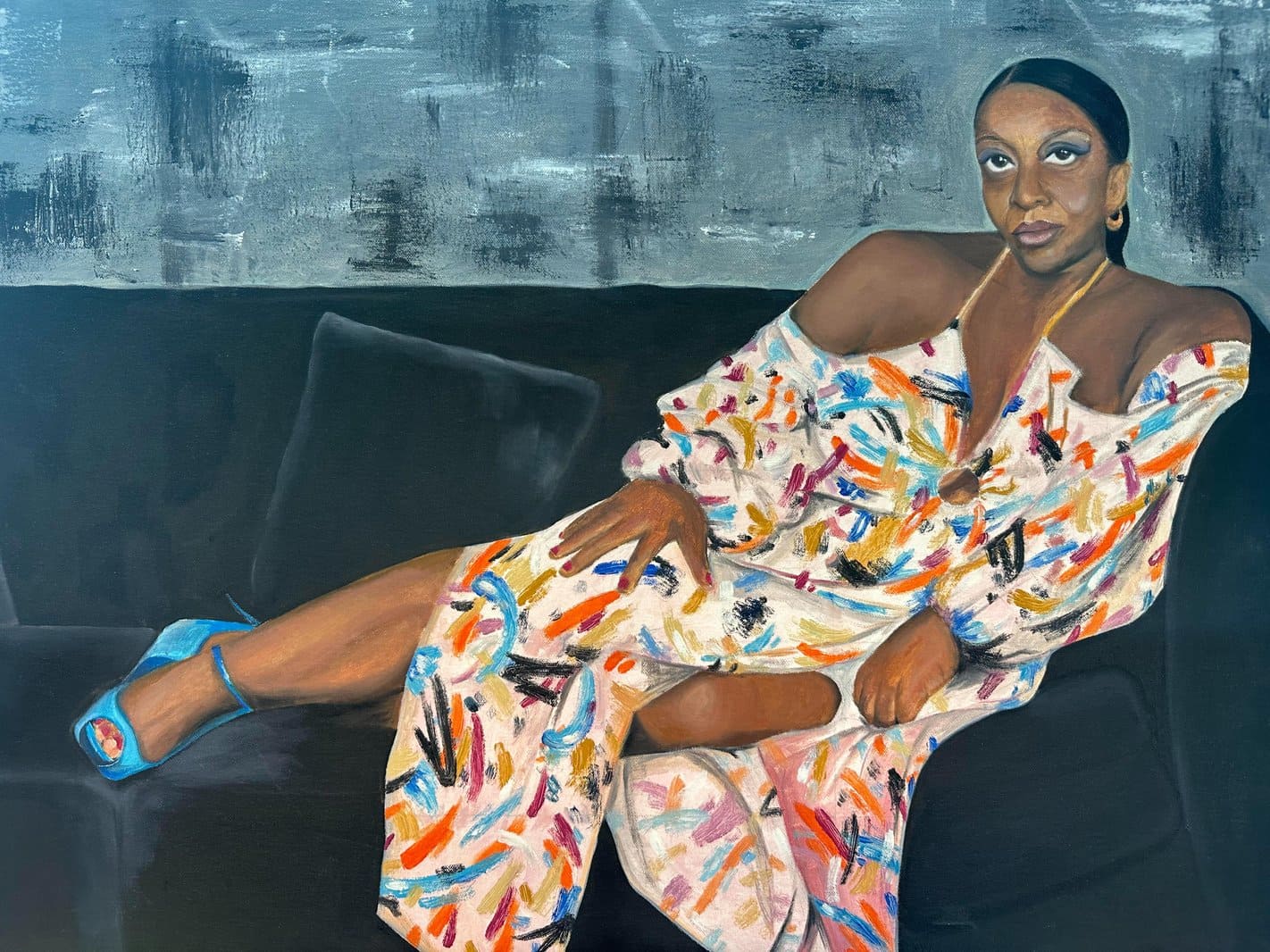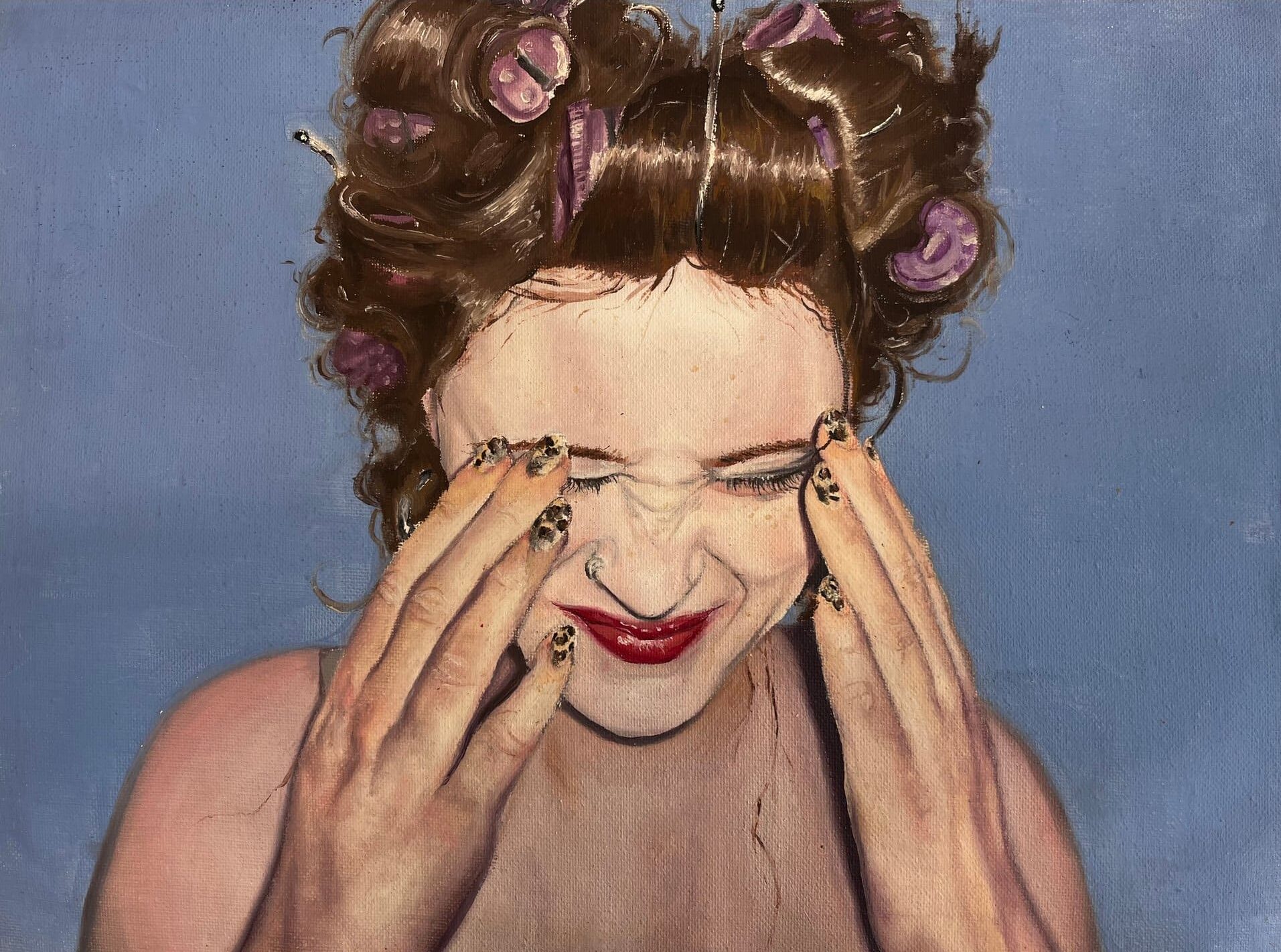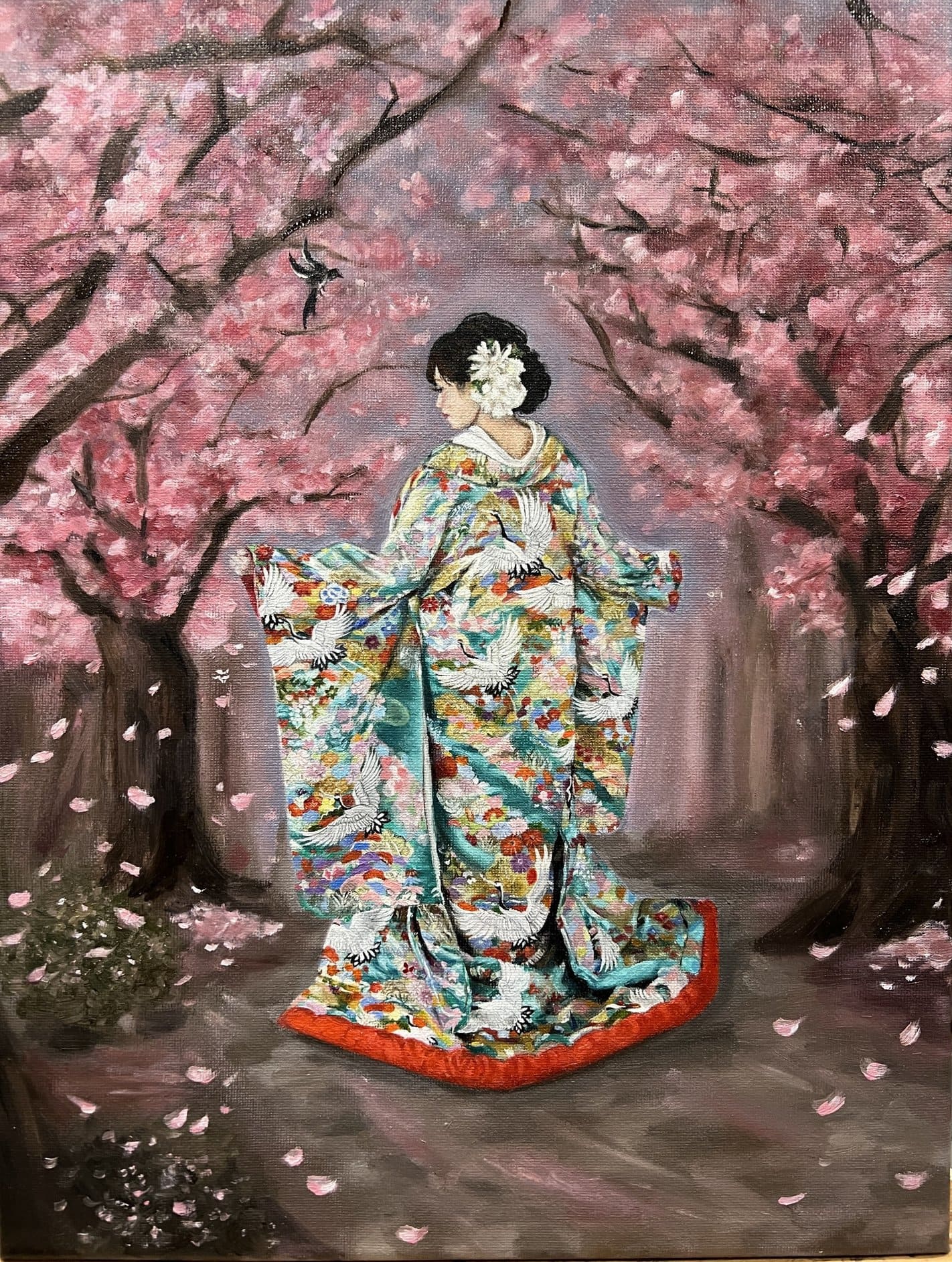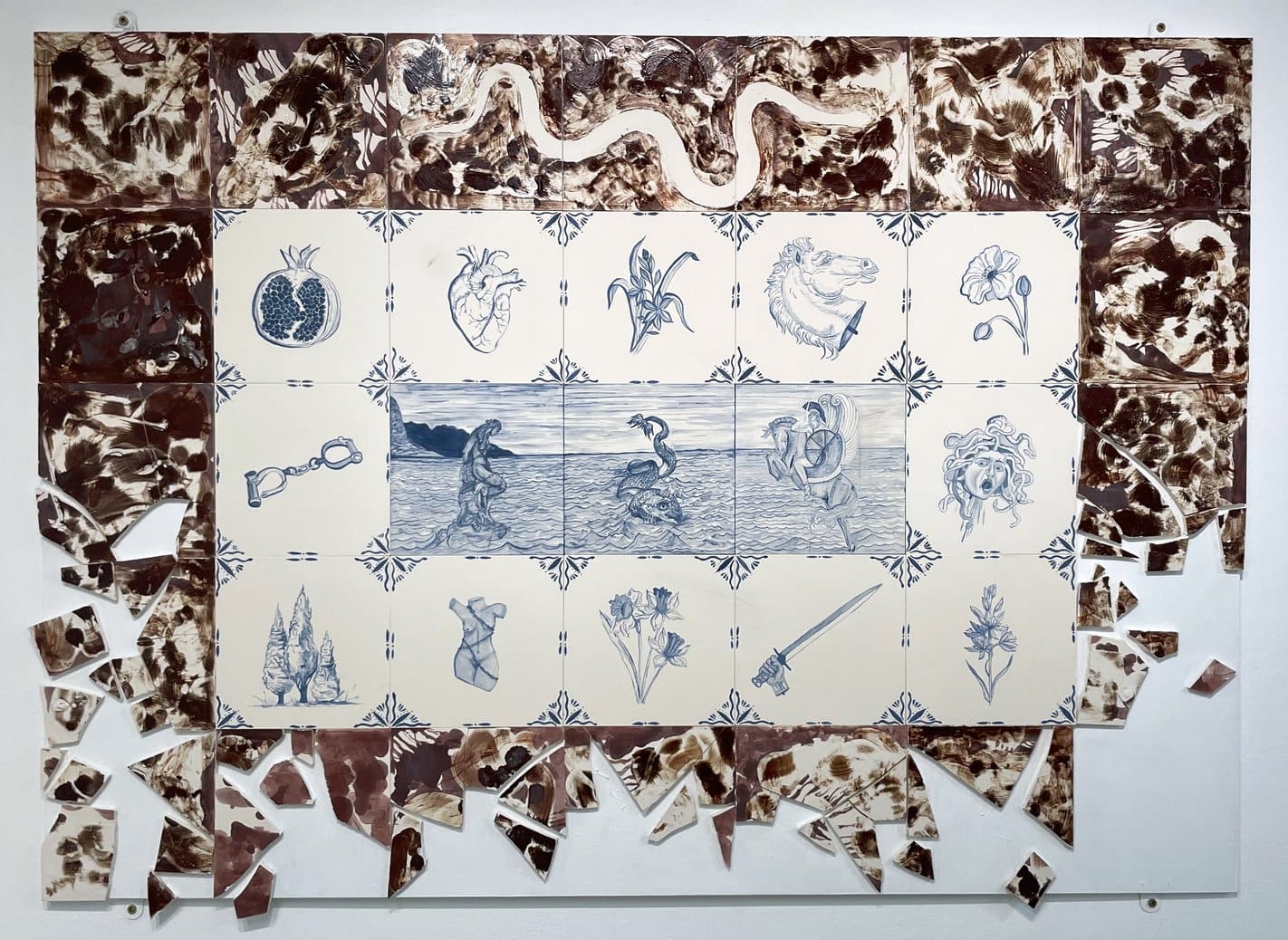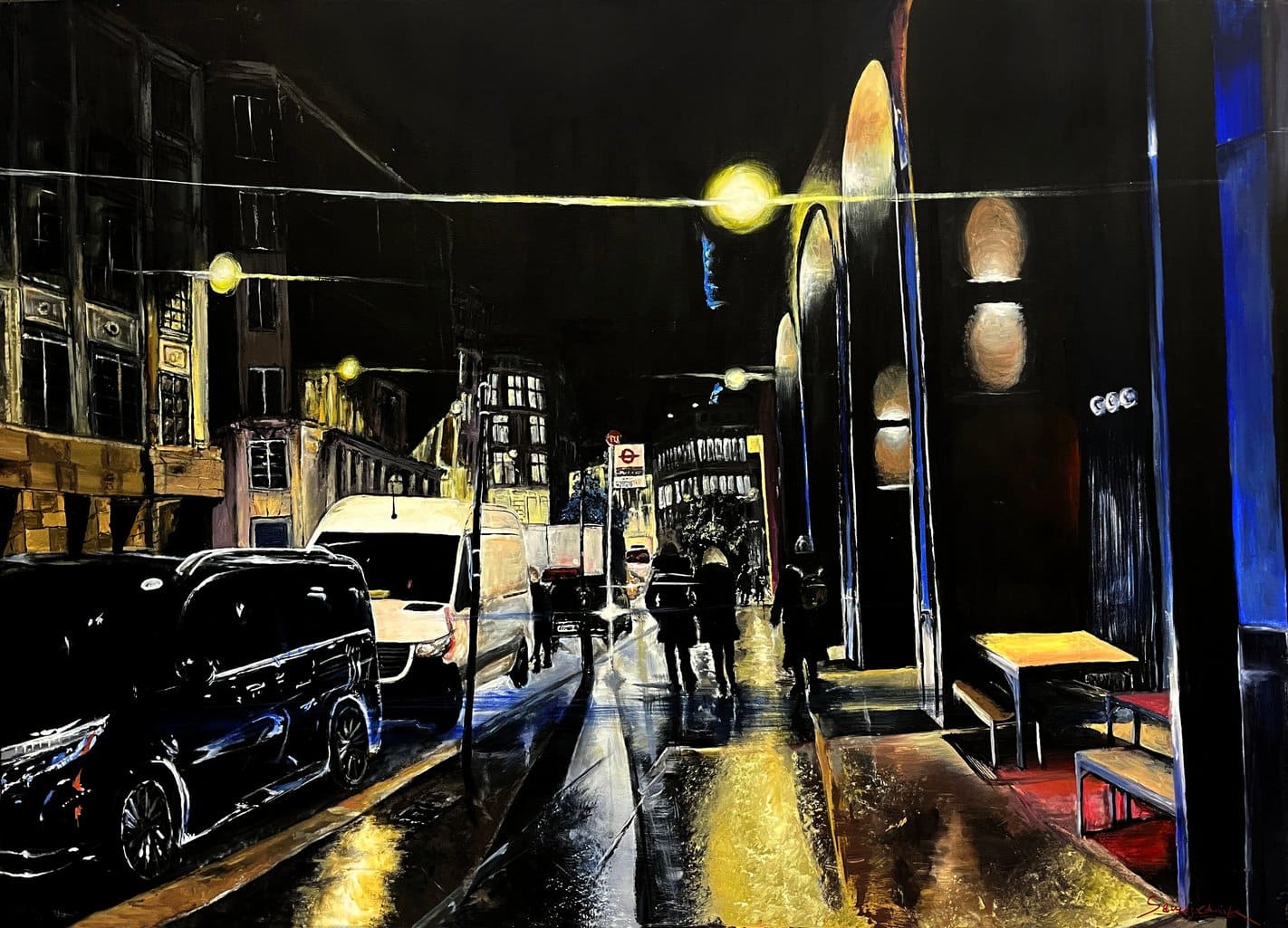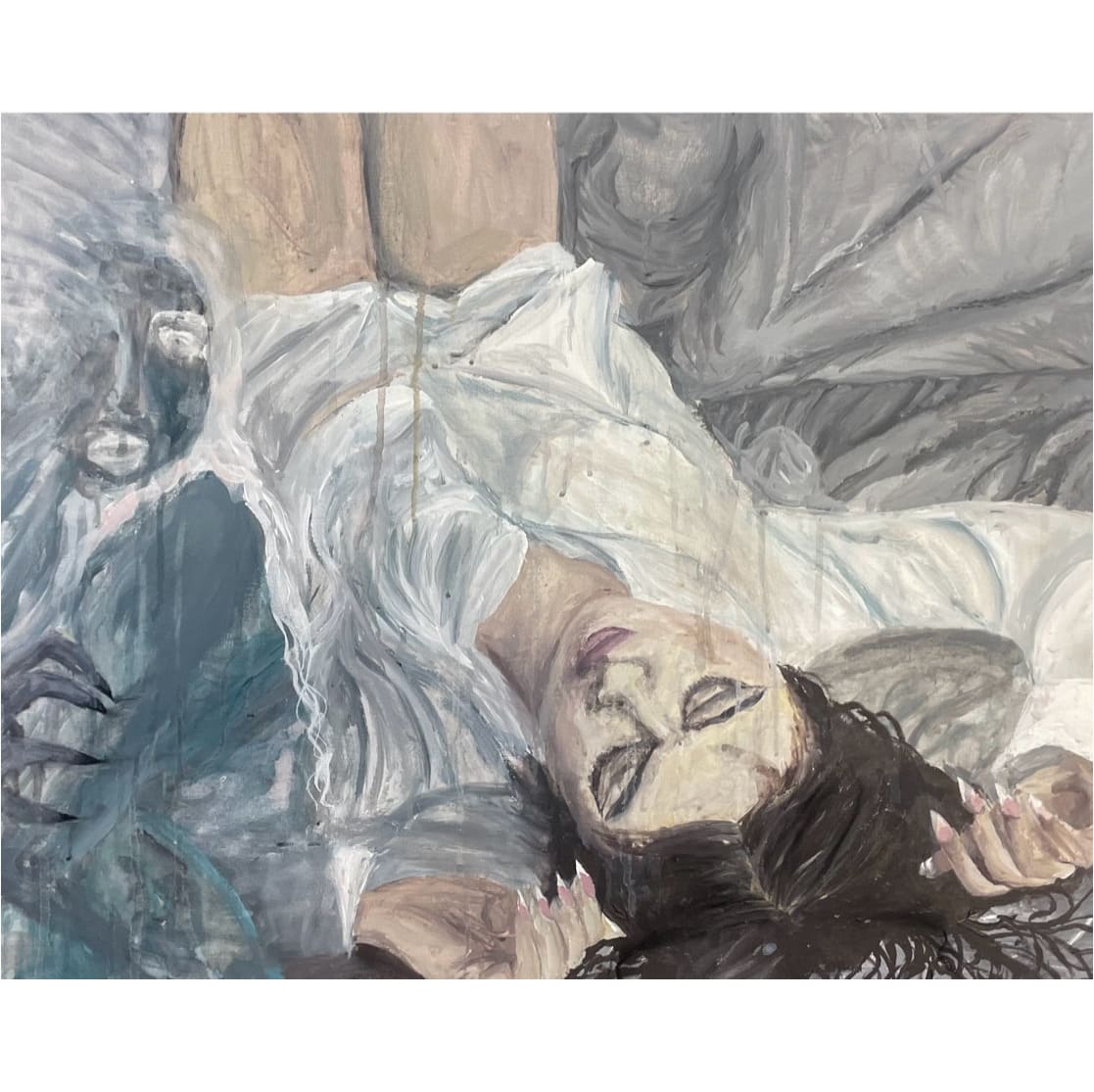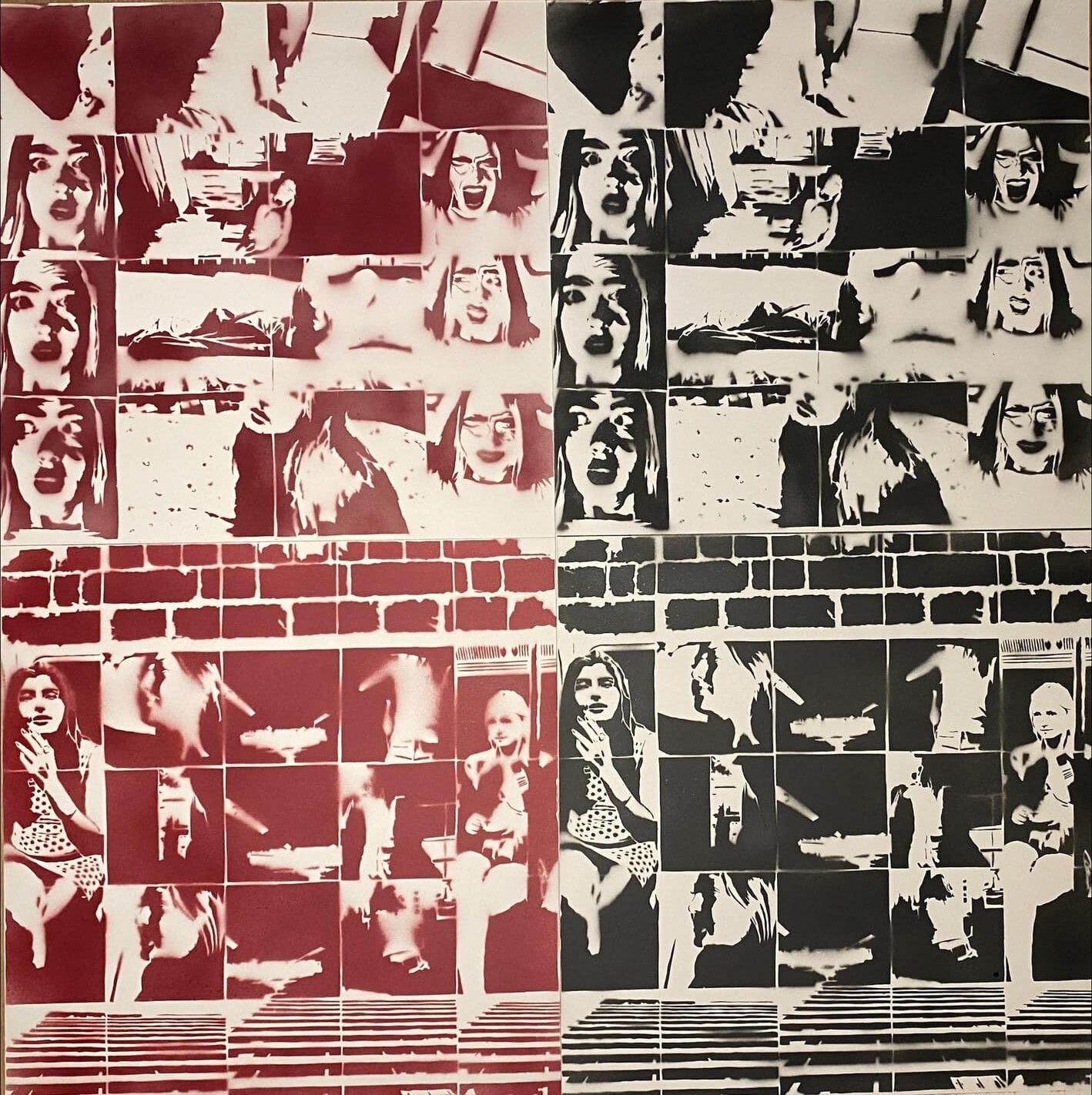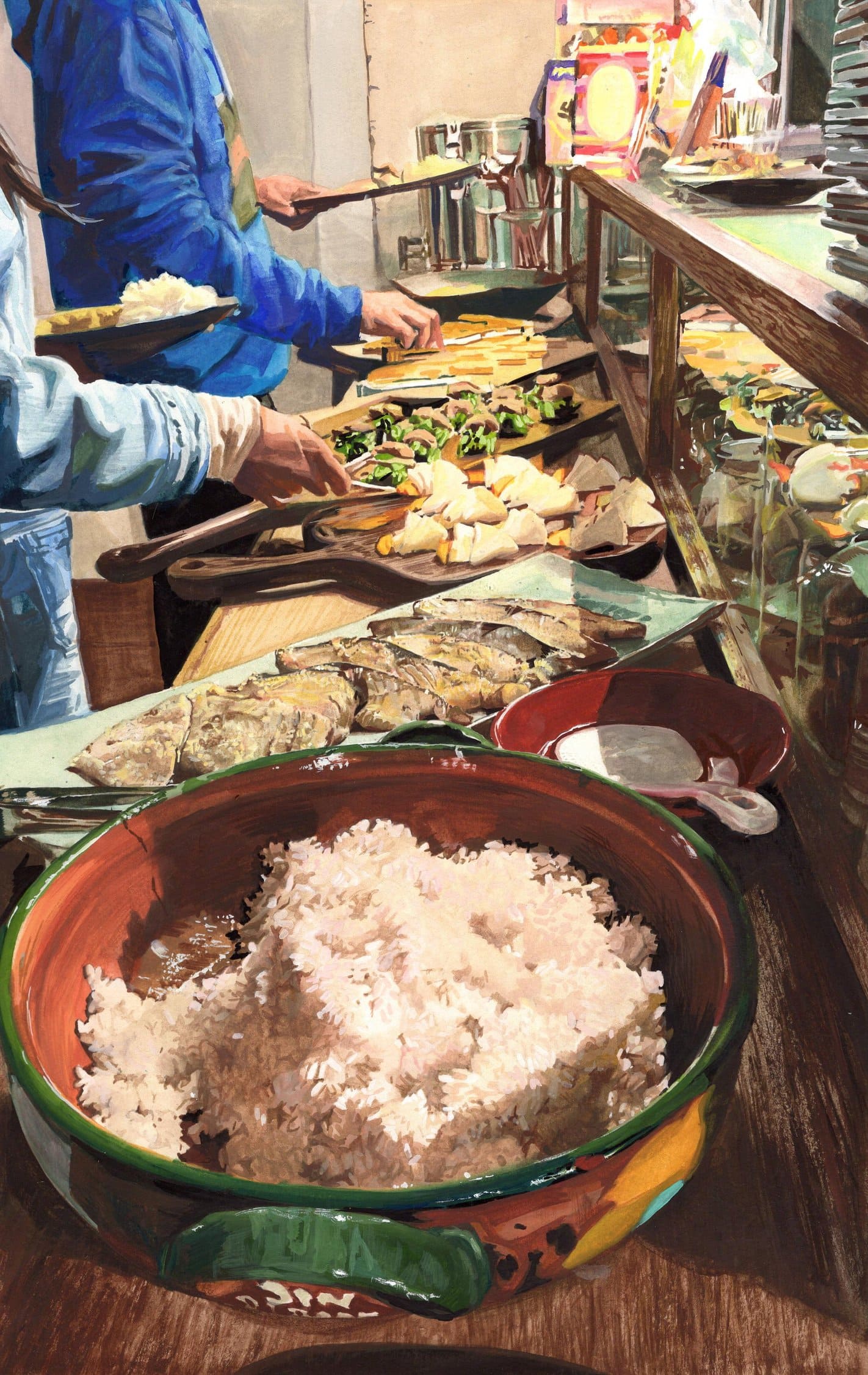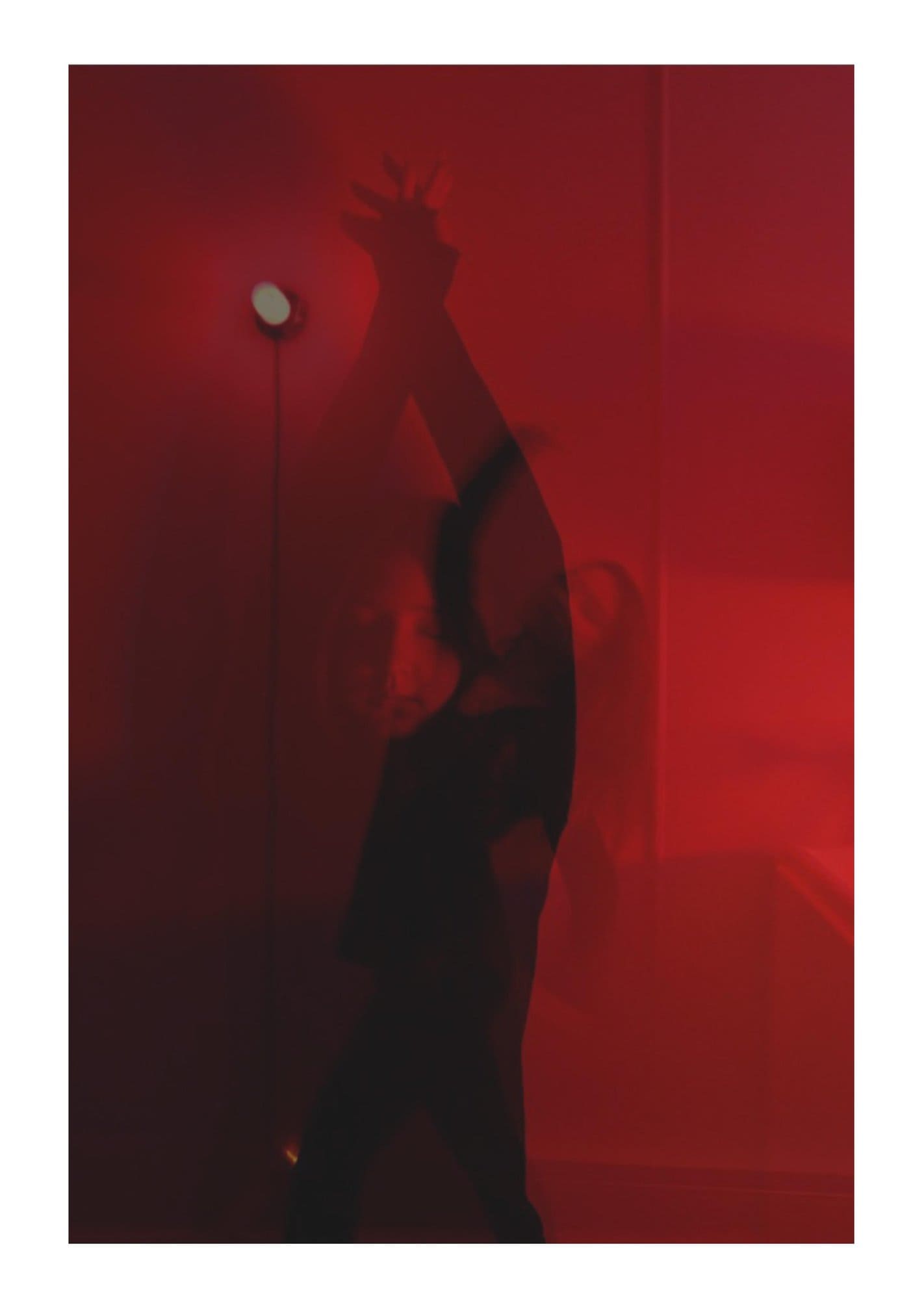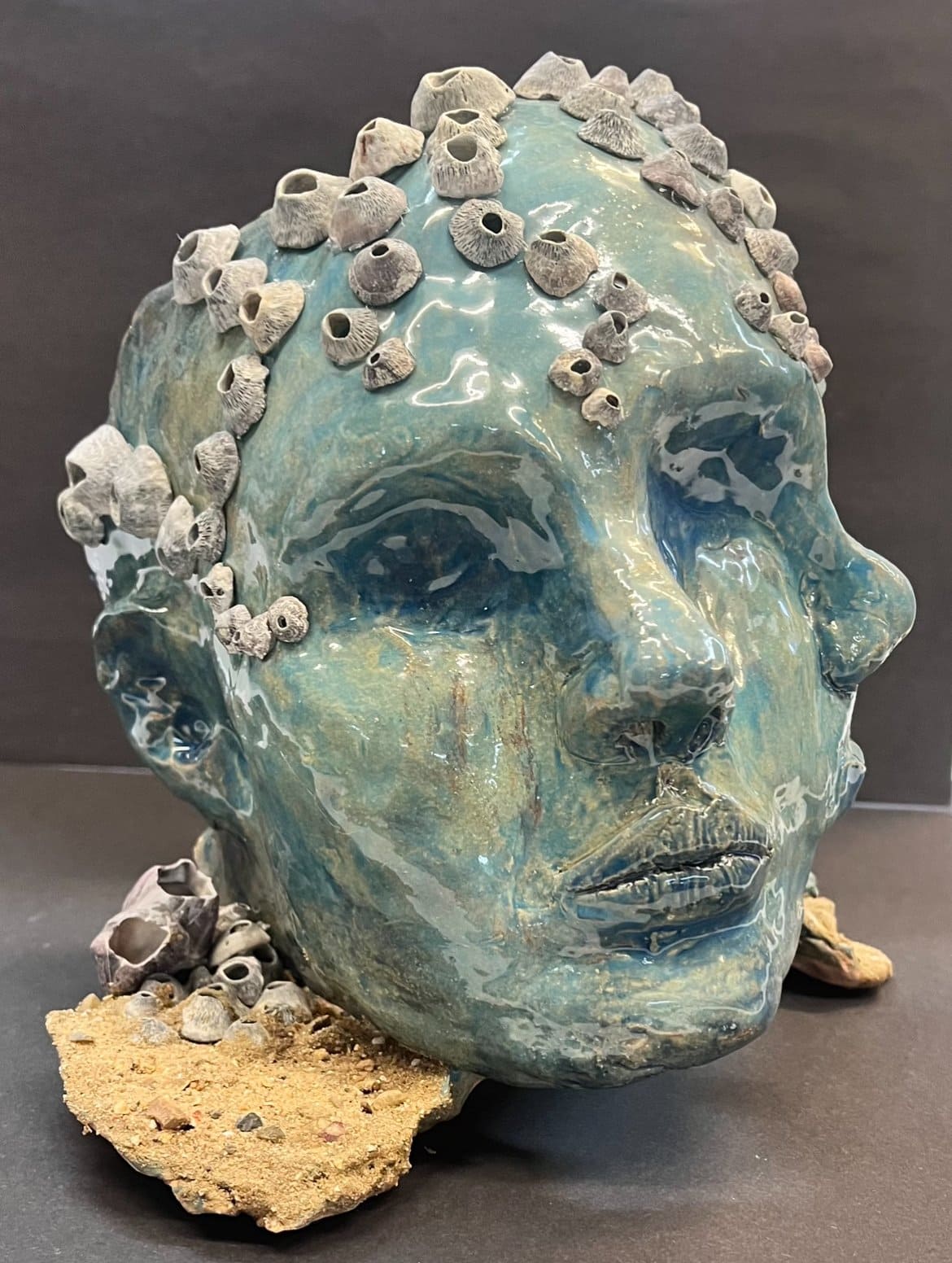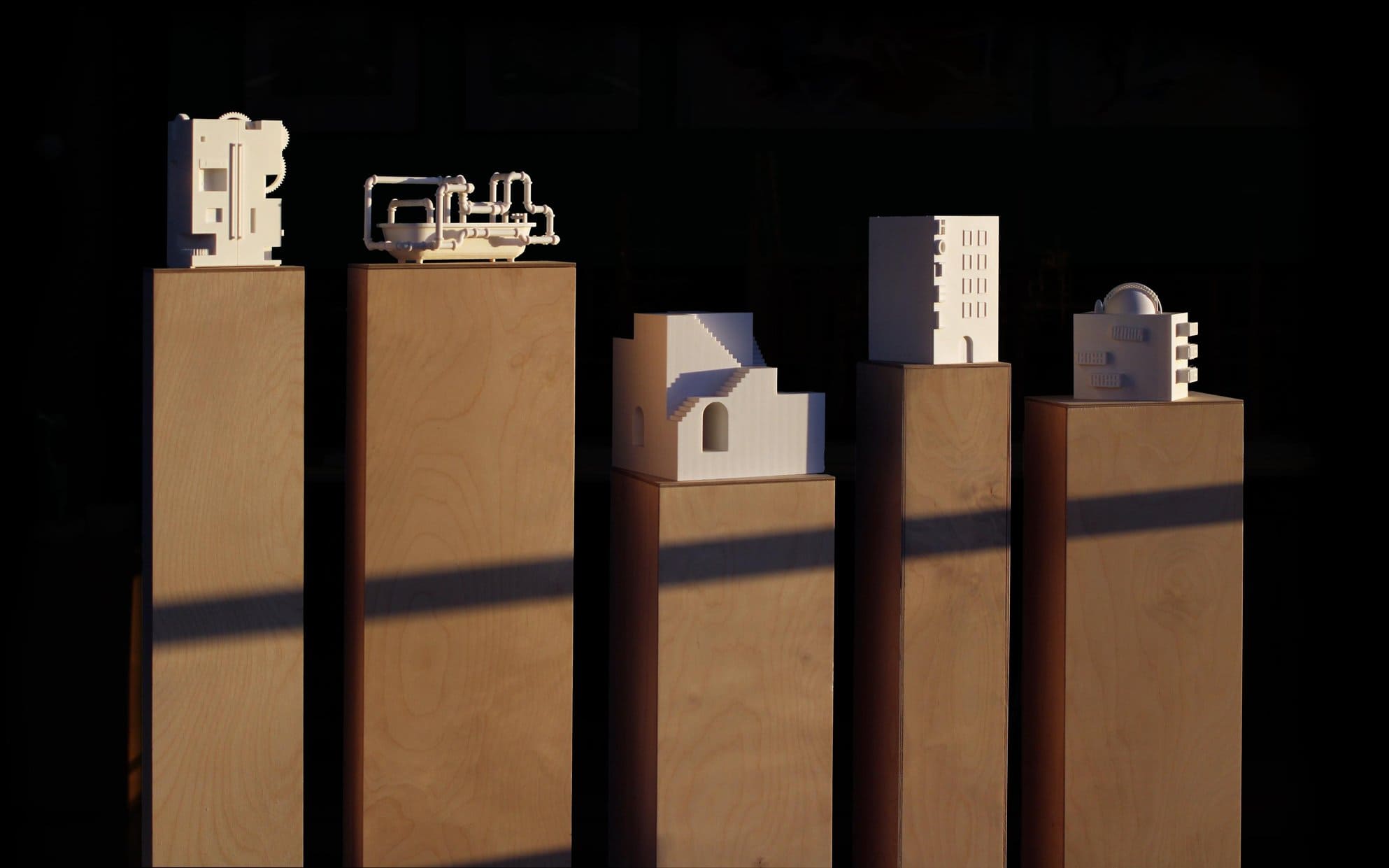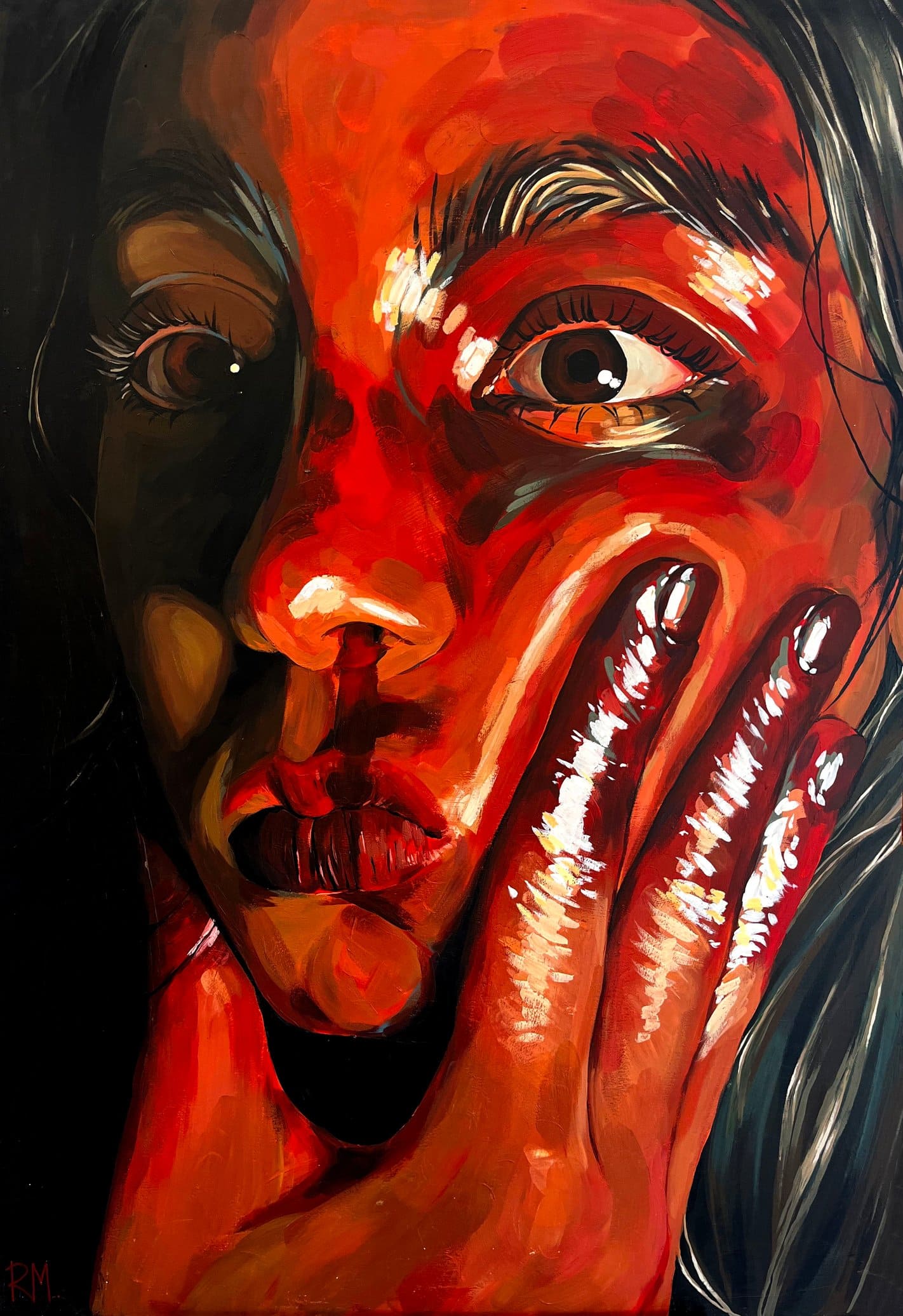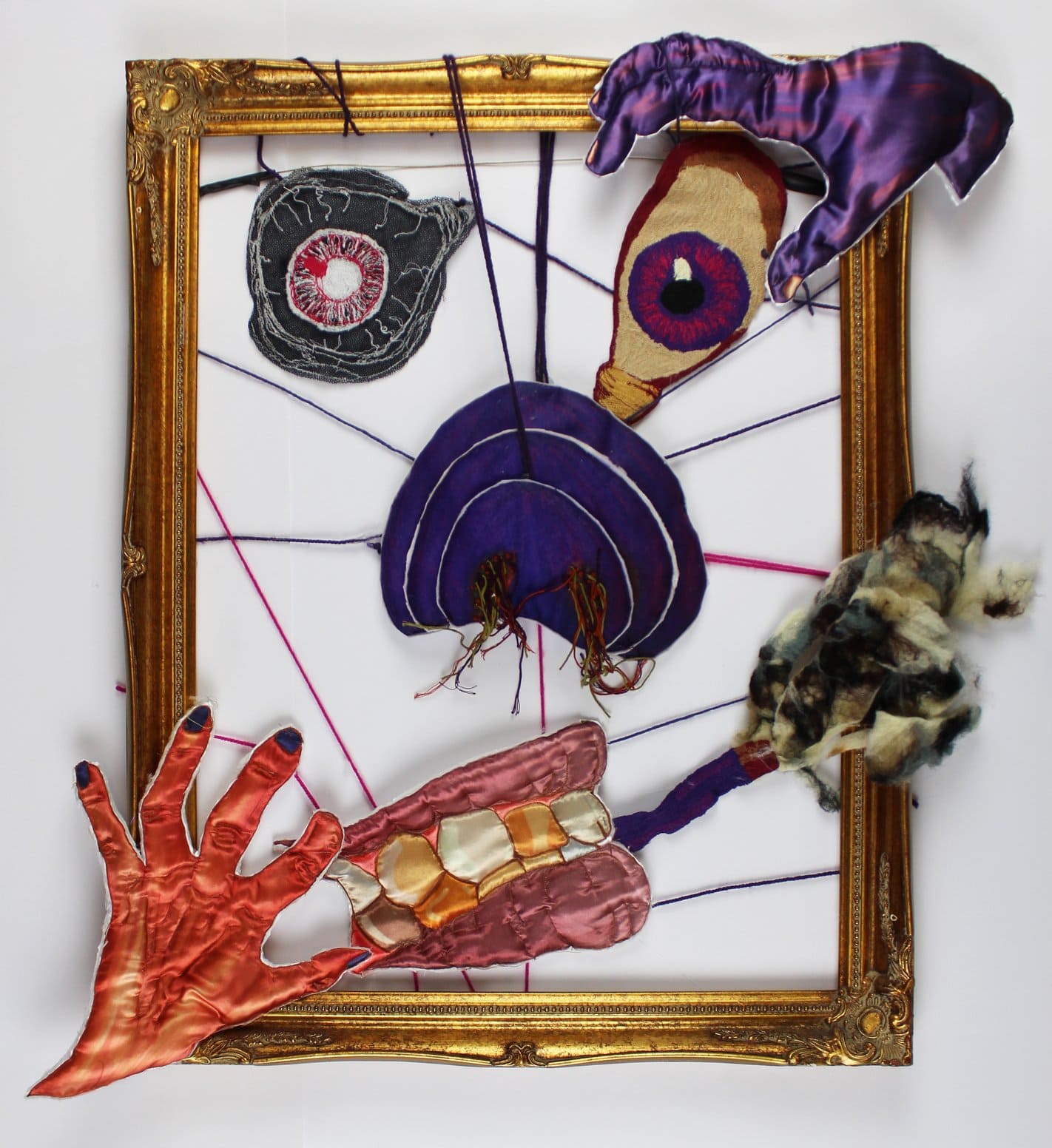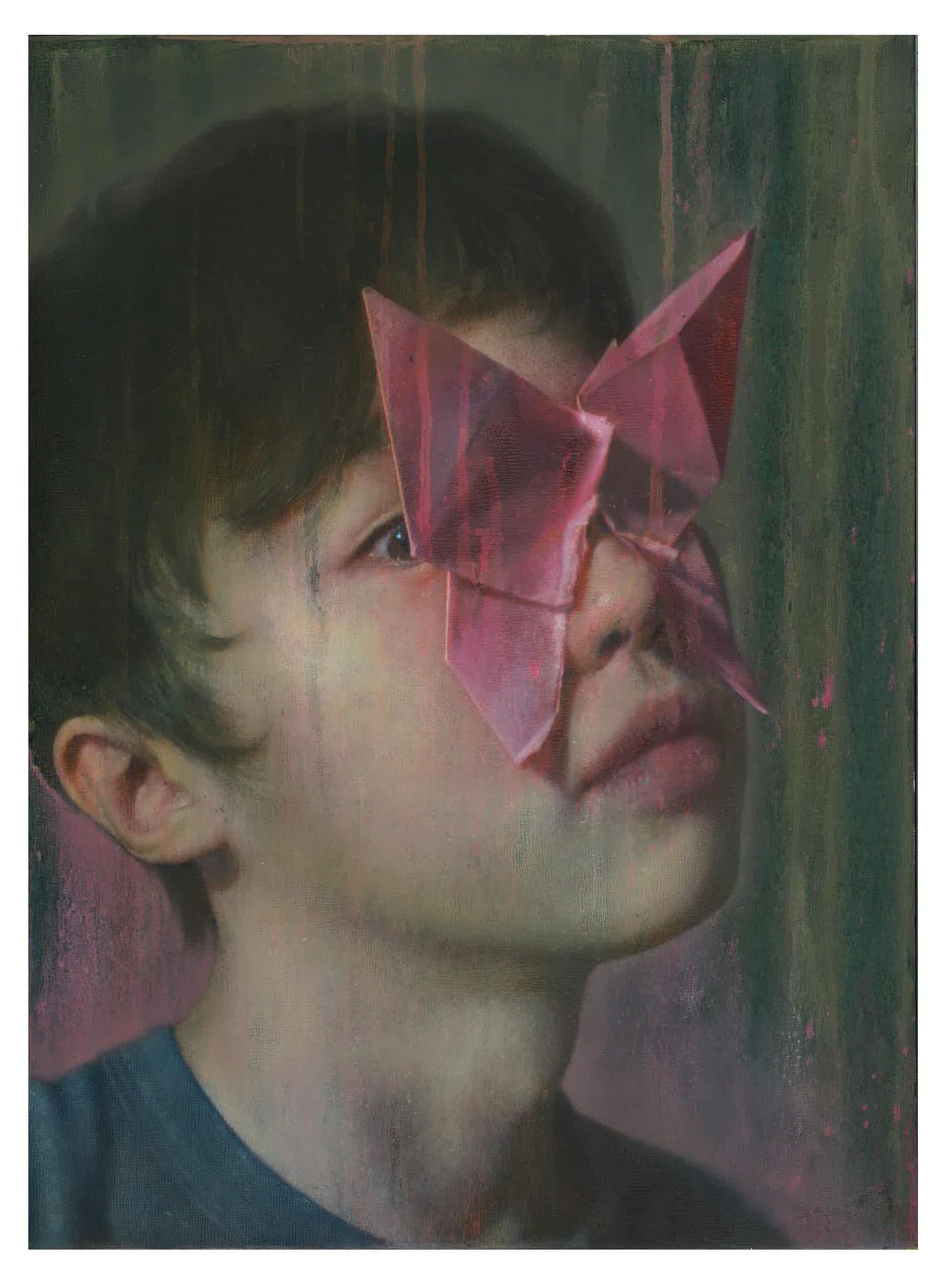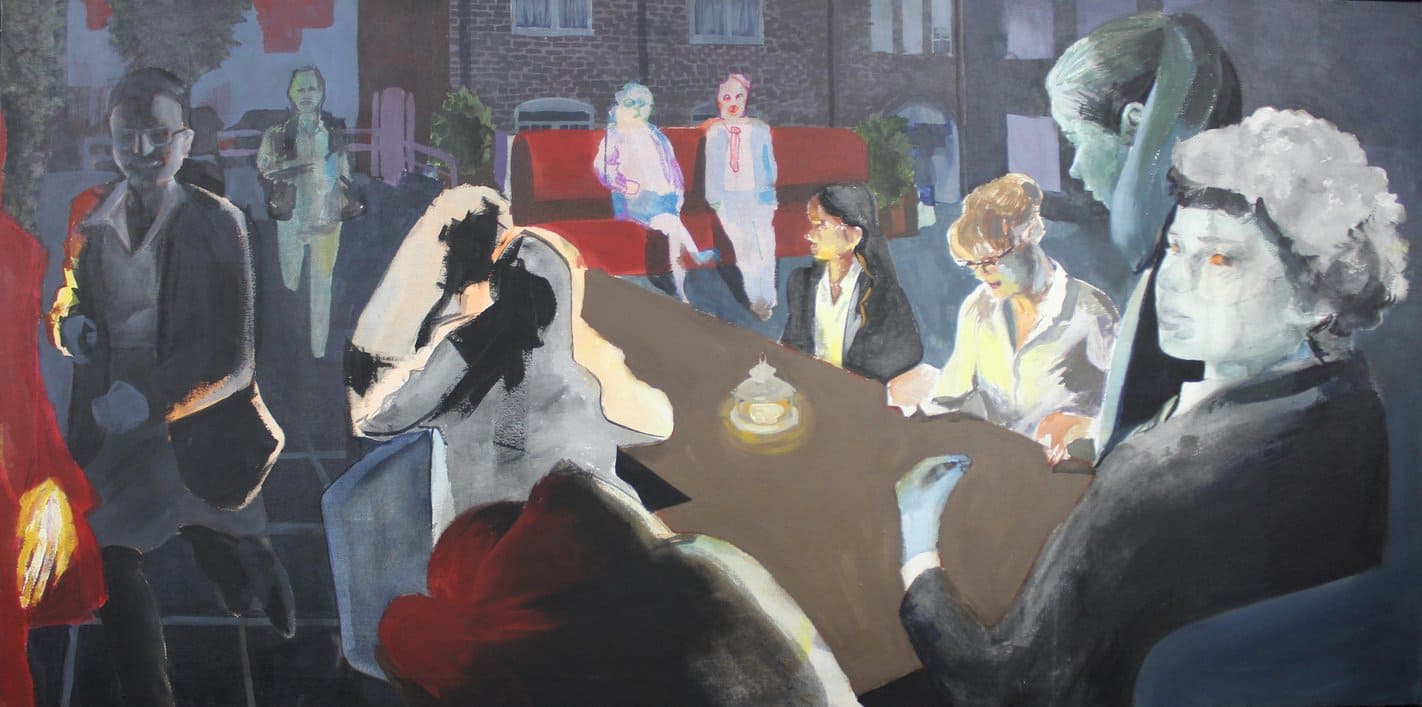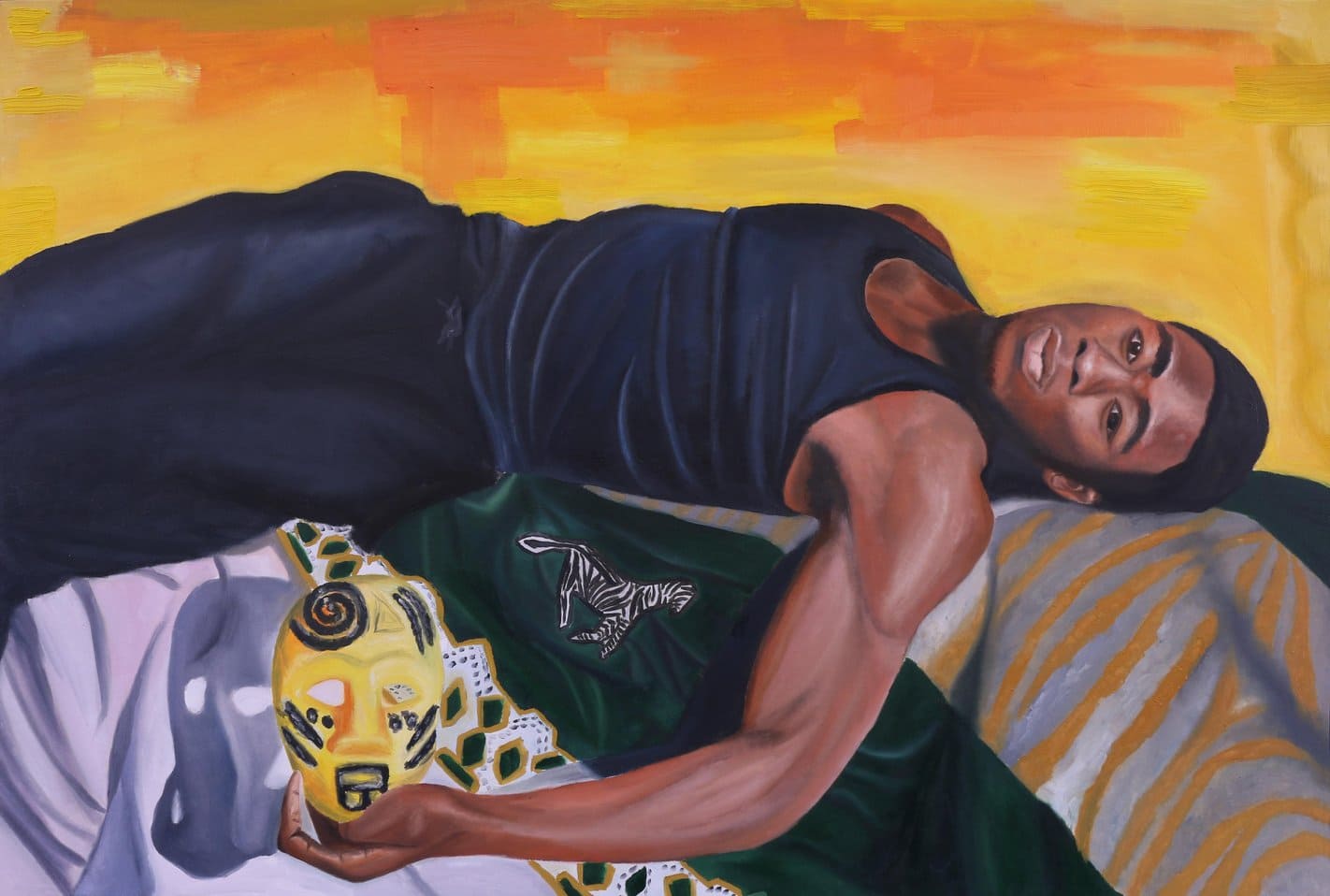Catalina Swinburn (Santiago, 1979) has been working with the geopolitical concept of displacement. Her practice of weaving vintage documents paper sheets as support became a manifest of political disagreement by using documents of displaced patrimonial treasures, or musical scores of operas with exile thematics, or geopolitical maps. Her weaving exercise is trespassing by a diasporic feeling with a poetic and subtle aesthetic. She persues to rescue ancestrals rituals related to sacred places, ancestral geography and original memory.
Catalina’s work translate into key messages and universal concerns such as: sustainability, identity, gender equality and globalisation underlining the connections of the Global South throughout history. The use of weave and vintage documets are used by her as a vital and dynamic language for raising awareness both physically and conceptually while aiming to strengthen the integration between various communities from the Global South in making reference to female resilience.
The work of Catalina Swinburn operates on a shifting border she establishes between cult and artistic practice. Her exploration of different visual media –video, installation, photography and performance results in often metaphoric and symbolic manipulations, which challenge reality as a representation of a world the artist is living in. Her practice summarises her identity as a female Latin American artist in an era with a multiplicity of encounters and realities.
The starting point of the series of paper works, is an investigation related to displaced archaeological pieces that were taken from their original place, and travelled to different institutions around the world to be exhibited as a power emblem. These skins - with their various folds and contingent aspects – are the place of fissures and traces bearing witness to memory. The process in which Catalina Swinburn creates her interpersonal work emphasises on the human necessity of the conditions of being, loss and destruction. Regenerating these narratives articulates for the artist both a sense of urgency and a mode of resistance.
The artwork is therefore activated by the artist’s position as both fabricator and performer of the sculpture. This could be seen as a metaphor for resistance, where woven narratives are portrayed as a substitute for the silence of women throughout history.
Swinburn’s sensational sculptures are produced by intricately weaving pages of texts together into constructed robust structures. Through this labour intensive approach, the material transforms from delicate pages of books to garment-like arrangements that the artist then wears as a cloak to perform in, as such her works undergo an important process of transformation and recycling.
The recycling aspect in this work happens through many dimensions: content, form and process. Following her performances, the works become sculptures with a history of their own and result in an amalgamation of history and memory.
Textiles are eloquent expressions of women´s concern with cultural tradition and transmutation, and are recognized as fundamental to studies of gender, social identity, status, exchange and modernization. Weave, tends to demarcate a suspension of ordinary existance and are among the most visible signs of sacred space and sacred roles. Textiles have played a prominent role in exchanges between the West and indigeous peoples throuhout the world. There is also an essential correspondence between the realms of agriculture and weaving, an isomorphic relationship. There are profund, conceptual, linguistic and religious connections between them two.
While textile production is rooted in a specific time and place, textiles become objects that function within a system of exchange. The pages from archival books, ripped, folded and transformed into coded messages already destined to such a purpose by the folding , mark the line that determines the scope of an enigma. The weaving thus restructures the ruins of the book to prepare them for an unimaginable role, as the singular components of a new object: a blanket that can be used as a garment or a shroud. The woven piece is transformed into a portable investiture. Porting a cloak its aluded to both female and male atributes; its a dressing, imposing and ritual piece that acts as and gendered identities on the frontier. The Cloak is also a talisman from harm, keeping one safe and secure throughout transitions.
By using weaving as a metaphor for resistance, this works on paper bring us closer to our cultural identity and offer an alternative view of the function of art as a vehicle of consciousness by meeting various forms of knowledge; oppening a dialogue between conservatism and innovation, between continuity and transmutation.
Catalina Swinburn
Born 1979. Santiago, Chile BA in Fine Arts. Catholic University of Chile. Chile Lives & Works Buenos Aires, Argentina & London, UK
Selected Solo Exhibitions
2021 Archaic Contingency. Selma Feriani Gallery. Cromwell Place. London
2018 Narratives of Displacement. Selma Feriani Gallery. Tunis, Tunisia
2016 La Frontera Perfecta. Centro Cultural Matta. Buenos Aires, Argentina
Fissures. Selma Feriani Gallery. Sidi Bou Said, Tunisia 2013 Arqueologia Anticipada. Isabel Aninat Gallery. Santiago de Chile, Chile
2012 Indulgences. Selma Feriani Gallery. London
Utopia installation. Farm Street Church. London, England
2011 Paraiso Perdido. Fundacion Collahusi. Iquique, Chile
Lujoso Silencio. Cecilia Gonzales Gallery. Lima. Perú
2010 Status Quo. Sala de Arte CCU. Santiago de Chile, Chile
2008 Lugares Comunes. Project Public Space. Vitacura. Santiago de Chile, Chile
No Hay Peor Ciego, Que El Que No Quiere Ver. Isabel Aninat Gallery. Santiago de Chile, Chile
2007 In Contemplation. 5006 Gallery. Buenos Aires, Argentina
2005 Piezas de Collección. Isabel Aninat Gallery. Santiago de Chile, Chile
2004 In Memoriam 12.05.04-05.06.04. Die Ecke Gallery. Santiago de Chile, Chile
In Memoriam. Animal Gallery. Santiago de Chile, Chile
Obituario. Animal Gallery. Santiago de Chile, Chile
2002 Memoria Velada. Animal Gallery. Santiago de Chile, Chile
En Memoria. Isabel Aninat Gallery. Santiago de Chile, Chile
Selected Group Exhibitions
2020 Garden of Senses, Mam Contemporary Art Salzburg. Vienna.
2020 Matters of Material, curated by Dina Nasser-Khadivi, Christie´s, London, UK
2020 Untitled, Selma Feriani Gallery, Sidi Bou Said, Tunis
2020 Viaje hacia la Luz, Curated by Thiago Verdi, Galeria Aninat, Santiago, Chile
2020 We all need Opera. Mam Contemporary Art Salzburg. Salzburg
2019 Imagen del Texto. Galeria de Arte Isabel Aninat. Santiago. Chile
2018 FRÜHLING [´fry:ling], der: weiblich. Mario Mauroner Contemporary Art Vienna. Vienna, Austria
2017 Examples to Follow / Expeditions in Aesthetics & Sustainabiity. Global Touring Exhibition. Curated byAdrienne Goehler. Parque Cultural de Valparaiso. Valparaiso, Chile
2016 Arte Con-Texto. Museo de la Universidad de Antioquia & Museo de la Universidad de Medellin. Medellin
2015 Migrations in Contemporary Art. Muntref. Buenos Aires, Argentina
2014 Portrait Redux. Selma Feriani Gallery. Tunis, Tunisia
2013 Portraits. Selma Feriani Gallery. London, U.K.
2012 About Change. World Bank. Washington, U.S.A.
2011 Con-Texto. Artnexus Space. Bogotá, Colombia
Art & Money, Dangerous Liaisons. Curated by Sebastian Gokalp. Monnaie du Paris. Pairs, France 2010 Pieta. Isabel Aninat Gallery. Santiago de Chile, Chile
2009 Cohortes. MAC Museo de Arte Contemporaneo. Santiago de Chile, Chile
2008 Sesgos Miticos en el Arte Chileno. Extention Centre of the University of Chile. Santiago de Chile, Chile 2007 Haber. MAVI Museo de Artes Visuales. Santiago de Chile, Chile
Handle with Care. Museo de Arte Contemporaneo. Santiago de Chile, Chile
2005 Relocacion. Isabel Aninat Gallery. Santiago de Chile, Chile
2004 Fotoamerica. Isabel Aninat Gallery. Santiago de Chile, Chile
In Memoriam 12.05.04-05.06.04. Valenzuela & Klenner. Bogota, Colombia
2003 Non SIte. Cultural Centre of Las Condes. Santiago de Chile, Chile
El Objeto en el Arte Chileno. Telefonica Foundation. Santiago de Chile, Chile
2002 Kent Installations. Santiago de Chile, Chile
Erased Borders. Miami, U.S.A.
Collections
Pilar Citoler Foundation. Cordoba, Spain
Balanz Capital Collection. Buenos Aires, Argentina
Petitgas Collection, London, United Kingdom
Latin American Art Collection Artnexus. Bogotá, Colombia
CCU Art Collection. Santiago de Chile, Chile
ICC Contemporary Institue of Culture. Sao Paulo, Brazil
Arte Al Dia Collection. Miami, U.S.A.
Rosenblum Foundation. Buenos Aires, Argentina
Permanent Public Intervention. Vitacura Parks. Santiago de Chile, Chile
